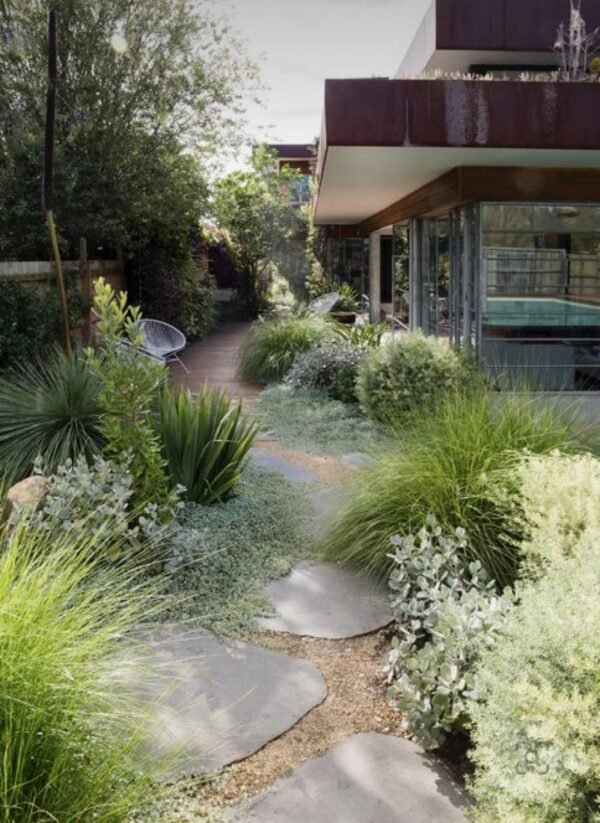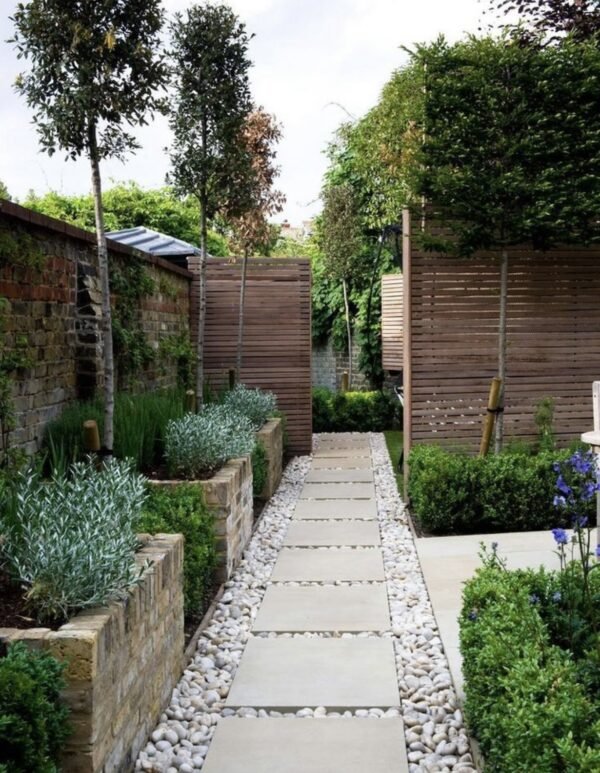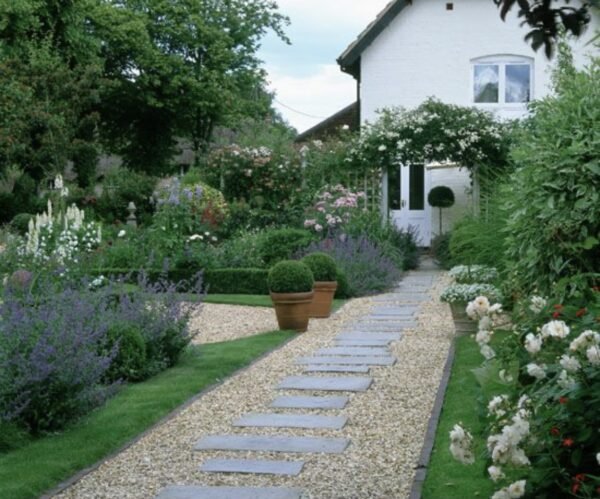
What is the point of having a garden path? It might seem like a silly question to ask, but it’s important. The answer is that you need a garden path because not only does it provide an attractive entrance to your home, but also one that leads right up to your front door!
Some people think this type of pathway isn’t necessary or even desirable. They believe a patio or porch are sufficient and often use them instead. But they fail to see the importance of creating an easy way for guests and family members visiting from afar to enter your property without needing assistance. A guest should never have to walk around in the grass just so they can reach the front door! That would be highly embarrassing for both parties involved, and inconvenient.
That is why garden paths are such a desirable addition to any home, and we’re going to show you how easy it is to envision one!
Find the best time to start your garden path project
When building a garden path, it is important to consider the time of year. You’ll want an even tempered climate so that potential problems can be avoided, and your beautiful design won’t suffer from inclement weather conditions such as rain or snow.
We would recommend planning ahead for what type of ground you have available before deciding on how to best use this feature in order to not only look great, but also stay durable over long periods. The reason for this is frequent traffic will wear away at anything made out of plastic composite materials, which may lead you towards needing replacement parts sooner rather than later.
Determine the Materials You Will Use

One of the first steps in building a garden path is to determine what type of materials you will need. There are many materials to choose from, so it’s critical to select the right one for your needs. Some of the most popular options include brick, stone, and concrete. Remember, you will need to decide on a colour scheme for your garden path. This is a very significant step, as the colour scheme will set the tone for the entire garden. You will need to select colours that will complement your home and your other garden features.
Pick the Best Garden Spot
When possible, pick a relatively flat spot for your garden because it’s more difficult and time-consuming to deal with an uneven surface. You may also want something that is easy on the budget too! You want to make sure that your new garden has an easy access point for water, this will help with its success. Furthermore, you want your garden to be a place where the plants are so tall they block out any sunlight, and it’s totally dark; the perfect spot to get away from all of life’s hustle bustles but still stay connected!
Think About the Size of the Path

Once you have decided on a layout, mark the boundaries of your path with stakes and string. Make sure that your garden path is wide enough for people and pets to walk on. A good rule of thumb would be 3 feet, but you should always check with ‘local code’ in the garden next door! If you use concrete for your pathway, you may need to use a 15 Inch Concrete Chain to cut the materials and get the correct size.
If your path includes curves or turns, use a flexible measuring tape to measure the radius of each curve. Then, use a piece of string to draw a curved line in the ground following the same curve. You’ll want to dig out the area for your garden path, making sure to remove any rocks or roots that could interfere with construction. Once you have marked the boundaries and dug out the area for your path, it’s time to think about perspective.
Perspectives & Accessibility
When designing a garden path, it’s crucial to consider its appearance from various viewpoints. Select a layout that enhances the overall appearance of your garden and home. Additionally, carefully select garden accessories, such as water fountain, a variety of mailboxes, that will complement the design of the garden path.
Consider how you will access your garden. Think about whether it is best to create paths through existing plantings or meadows, and if so which way these should go in order for them not only be easily accessible but also aesthetically pleasing! Your neighbours’ approval is the most significant thing when it comes to maintaining your stance in society, and integrity of your path crucial for this goal.
Add Other Features to Your Garden Path
One great way to customize your garden path is to add features like benches, bird baths, or statues. This can not only add beauty and functionality to your path, but it can also help to improve the overall appearance of your garden. If you’re looking for a truly unique path, consider adding some paving stones in a different colour or shape. You can also use different materials like gravel or wood chips to create a more rustic look. Contact a gravel delivery service to order the gravel that you want to use in your pathway.
An elegant and stylish wooden arch will draw the eye towards your garden, giving it an airy look. Furthermore, the incorporation of artificial grass to your garden allows longevity for your garden path. The edges will not need trimming, and dirt won’t stain your flags.
Whatever you choose, be sure to keep the overall theme of your garden in mind when selecting path features.
Now that you know how to build a garden path, it’s time for action! Just remember patience, and plan ahead. Once complete, you’ll want many ways of using these paths – from walking along them or sitting under trees while reading magazines, to building steps, so little ones can jump play games without fear of dirty feet or injury. The end result will be well worth your effort in this project.
